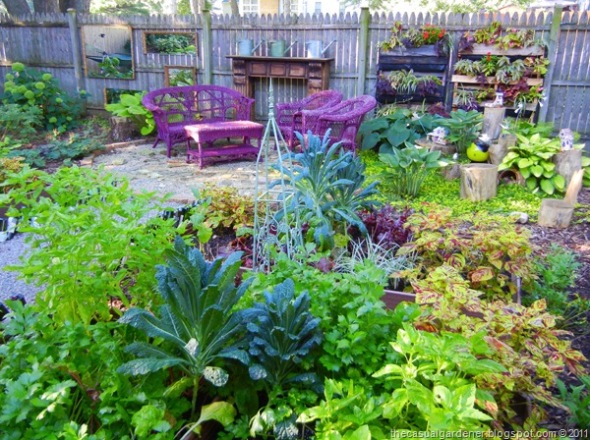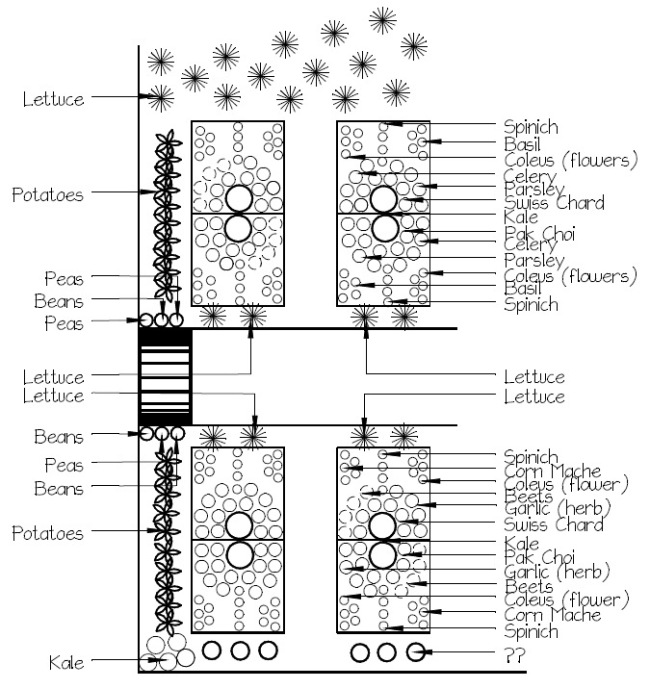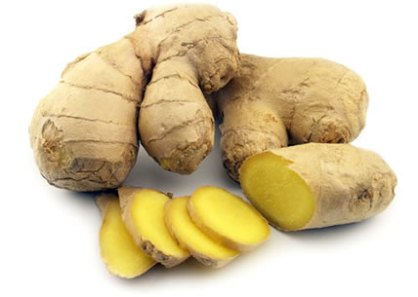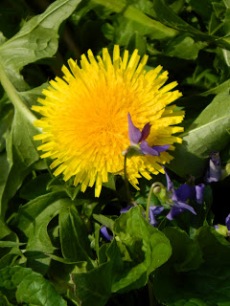so you have a crummy, shady area where the lawn isn’t doing it for you but just don’t know what to do with it? MAKE A SHADE GARDEN!!! there is a popular belief that you cannot garden without full sunlight. wrong! read the article at the link and learn. i’m doing this, myself.
organic
GINGER BENEFITS PEOPLE WITH ASTHMA
by Dr. Mercola
Ginger has been used medicinally for centuries and in the U.S. is perhaps most known for its ability to soothe nausea and stomach upset.
It is without a doubt the best remedy I know of for nausea. You don’t need much just a piece the size of your fingernail minced very finely and swallowed. It is phenomenally effective.
But now new research suggests this natural root may provide help for much more, including for arthritis pain, heart health, and people with asthma, in whom ginger may enhance the effects of the bronchodilating medications conventionally used to treat their condition. It may even be useful for weight control!
click here for more info:
http://healthimpactnews.com/2013/ginger-benefits-people-with-asthma/
COCONUT OIL FOR SKIN HEALTH
(photo from google)
many uses of coconut oil for your skin
http://healthimpactnews.com/2012/coconut-oil-for-skin-health/
16 of the greatest garden plants to grow indoors
Some rights reserved by missellyrh
16 of the greatest garden plants to grow indoors
garden year round! eat healthy home grown food, anytime.
CLEAN YOUR VEGGIES AND FRUITS

Create Your Very Own Backyard Pharmacy: The 10 Most Useful Medicinal Plants For Your Garden
Would you like to create your very own backyard pharmacy by growing medicinal plants?
There’s no better way to use whatever extra space you have at home than to create a garden space where you can grow medicinal plants.

In fact, even if you live in an apartment setting, you can create a windowsill garden where you can grow medicinal plants.
This is especially useful if you have little kids running around in the house who can acquire a burn, a shallow wound, a sore or strike up a fever.
Basically, the medicinal plants to grow in your very own little garden space should be ones with the most number of medicinal values.
for the entire article, please click the link:
ORGANIC DANDELION JELLY
Organic Dandelion Jelly
A Cat’s Cradle for Tomatoes An easy technique to train your tomatoes.
Many years ago, I saw a farm worker trellising tomatoes in a commercial field. He quickly walked down one row and up the other side with his hand bobbing up and down like a needle on a sewing machine. In minutes, hundreds of tomato plants were secure in their trellis. This speedy technique, sometimes called Florida weave, holds tomato plants upright in slots created by twine strung horizontally between stakes.
Without a trellis or cage, tomato plants would sprawl on the ground, vulnerable to fungi and insects. One of the most common ways to trellis tomatoes in the home garden is also one of the most time consuming: tying a tomato plant to a stake. With one or two plants, that’s no big deal. But if you have a dozen or more tomatoes needing weekly attention as they grow, the Florida weave saves time.
Here’s how: Plant tomatoes in a straight row, spaced about 2 feet apart. Drive stakes at the beginning and end of the row and in the spaces between the plants. (In regions without a lot of wind, you can get by with a stake between every other plant.)
http://www.organicgardening.com/learn-and-grow/cat-s-cradle-tomatoes
BUILDING A GARDEN THAT BUILDS SOIL
As you can see from a prior post on building raised beds, this is how i garden. I build the soil under the plants so they are always fed. Lasagna gardening is the way to go. This article gives you a lot of good information explaining the importance.
I wouldn’t know how to begin a discussion on gardening without beginning with the soil. When I teach a workshop, I ask people what they think of when they think “garden”. Most often, the answer has to do with the harvest. And, of course, we wouldn’t garden if we couldn’t look forward to a bountiful harvest. But, I always encourage my students to think “soil” because healthy soil will result in a healthy, nutrient-dense harvest. A garden with poor soil may produce fruit, but that fruit can’t possibly contain the nutrients, or taste as good, as one grown in soil that has provided all that is needed for its health. And plants grown in healthy soil have less problems with disease and pests.
Components Of Healthy Soil
So, what makes soil healthy? Soil is so much more than dirt. One of the components is, of course, weathered rock. That is where our garden plants will receive many of the minerals that they need. Good soil also contains organic matter – things like worm castings, decomposed leaves, and even the remains of soil organisms like insects, fungi and bacteria. Replenishing organic matter is essential to soil care.
SEE THE ENTIRE ARTICLE AT THE LINK:
http://www.modernalternativekitchen.com/2013/05/building-a-garden-that-builds-soil/#.UaK4EUDVDE1
6 great reasons to compost
Compost is simply decomposed organic matter, but it’s the best gift you can give your garden. Here are just a few of the many benefits of compost. (click link for article)










You must be logged in to post a comment.